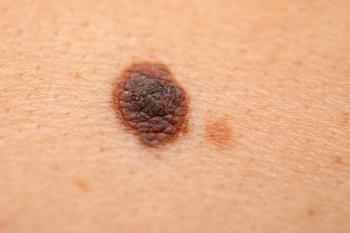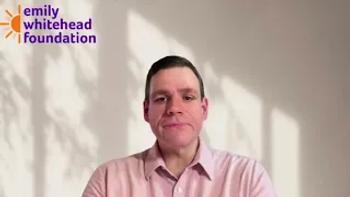
Gene therapy could be ‘ultimate solution’ for sickle cell disease
Investigational gene therapies might reduce the suffering and death caused by this genetic disease.
Gene therapy might offer new paths toward managing sickle cell disease, according to Presidential Symposium panelists at the 58th American Society of Hematology (ASH) Annual Meeting in San Diego on Tuesday, December 6.
An estimated 25 million people globally have sick cell disease, with another 300,000 children born each year with this painful, deadly genetic disease. But the genome-editing era has offered new hope. Novel gene-therapy approaches “could permanently remedy this disease,” said ASH President Charles S. Abrams, MD, of the University of Pennsylvania, in Philadelphia.
Sub-Saharan Africa is the global epicenter for sickle cell disease. Nigeria has the planet’s highest incidence of the disease, followed by India and the Democratic Republic of Congo, said Kwaku Ohene-Frempong, MD, president of the Sickle Cell Foundation of Ghana, in Kumasi, Ghana. The disease can be challenging to manage; stem-cell transplantation remains the only curative intervention, and it doesn’t always work.
Sickle-cell anemia kills young children at an alarming rate. In Africa, it is a “neglected cause of early childhood mortality,” Ohene-Frempong reported. “We know what interventions work but these have been poorly implemented in Sub-Saharan Africa.”
The entire continent of Africa has only one hematopoietic stem cell transplantation center, in Nigeria. “In Ghana, the government is struggling to continue to offer free screening of newborns,” Ohene-Frempong said.
Screening and prevention programs on the continent are limited. Children go undiagnosed and untreated for the disease, and therefore die very young in large numbers. Even pain-abating therapy with the antimetabolite hydroxyurea is difficult to come by in Africa, because it must be imported and is too expensive for most patients’ families.
“Although current data are inadequate to support definitive statements, they are consistent with an early-life mortality of 50 to 90%,” Ohene-Frempong noted. “There is no reason to believe that the fate of young children with sickle cell disease today is better than it was in the 1970s.”
The WHO reported in 2006 that sickle-cell anemia contributes to 5% of deaths on the African continent overall, 9% of such deaths in Western Africa-and up to 16% of deaths among children younger than 5 years in Sub-Saharan Africa, he said.
Worse, despite significant treatment gains in the United States and other affluent countries, incidence trends worldwide are going in the wrong direction overall.
“Global burden of sickle cell disease is predicted to increase significantly in the coming decades, with almost all of the increase in sub-Saharan Africa,” Ohene-Frempong said.
To confront that situation, the Global Sickle Cell Disease Network has been established to expand and sustain newborn screening and early intervention around the world, to expand access to hydroxyurea therapy (which is the “most feasible disease-modifying therapy in low-resource settings, Ohene-Frempong noted), and to foster multi-agency collaborations for sustainable funding for efforts to address the problem.
Gene therapy might be the “ultimate solution,” he said.
Gene therapy as the ‘ultimate solution’
It is early days, yet. Most gene therapy approaches remain in early experimental stages of development; only a few are in the very early stages of clinical study.
But gene therapy is an intuitive approach. Sickle cell disease and β-thalassemia stem from a post-fetal transition from fetal Æ-globin expression in hemoglobin to the mutated adult β-globin that distorts red blood cells’ shape from discs to sickles or crescents. Targeting the HBG1 and HBG2 genes and their promoters might stymie that transition.
Researchers around the world are employing genome editing tools like CRISPR/Cas9 to encourage better expression of fetal hemoglobin in patients’ blood cells. Some are trying to devise other ways to curb expression of β-globin mutations.
For example, working with others, Gerd A. Blobel, MD, PhD, of The Children's Hospital of Philadelphia, University of Pennsylvania Perelman School of Medicine, in Philadelphia, is experimenting with remodeling of chromatin architecture to regulate β-globin gene expression.
Chromatin looping is a process that helps cells regulate gene expression, but that natural process can also be manipulated in the lab. Such “forced chromatin looping” can disrupt enhancer contacts with target genes.
There are four gene therapy clinical trials for sickle cell disease currently under way: one in France, two in the United States, and one in Italy.
Other researchers, like Daniel E. Bauer, MD, and colleagues at Boston Children’s Hospital in Boston, are using genome editing to target the fetal hemoglobin repressor gene BCL11A and RNA-transcription regulators.
Genome-editing gene disruption attacks the “Achilles’ hell” of sickle cell disease, Bauer said. The feasibility of the approach is bolstered by similar efforts in other fields, like work with HIV patients, he noted.
“There are several viable paths to the summit of a sickle cell cure,” Bauer said. “All of them should be explored for efficacy and safety and in a manner that can benefit the most patients, here in the United States-and around the world.”
Newsletter
Get the latest industry news, event updates, and more from Managed healthcare Executive.




















































